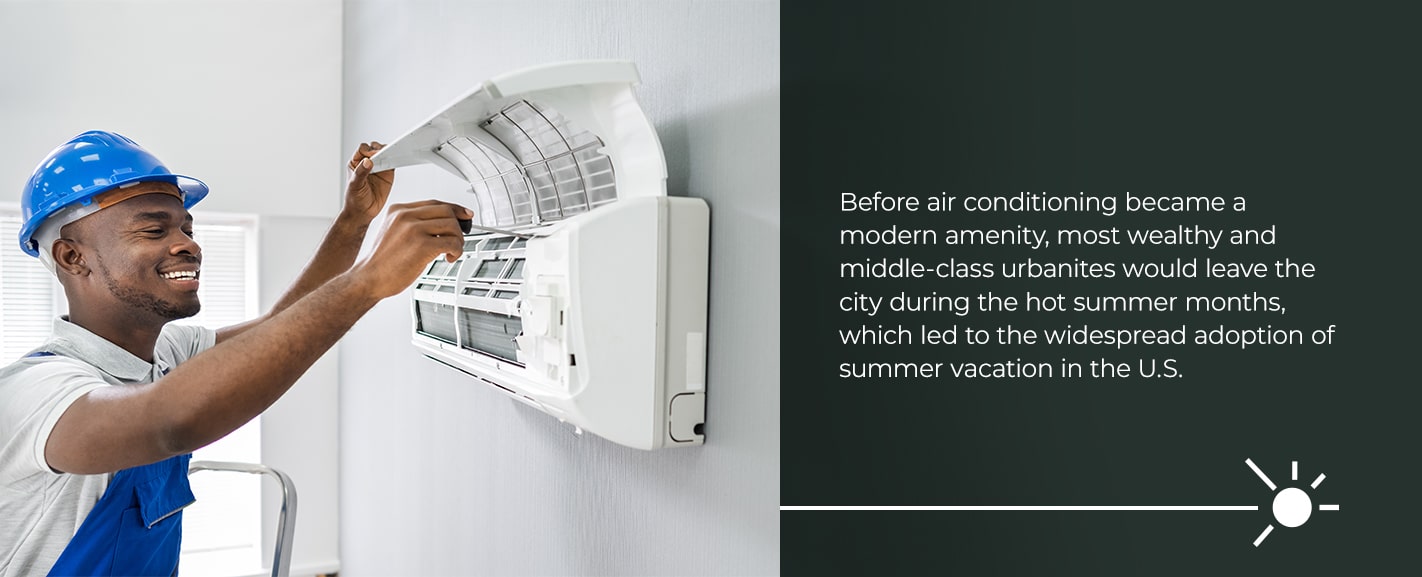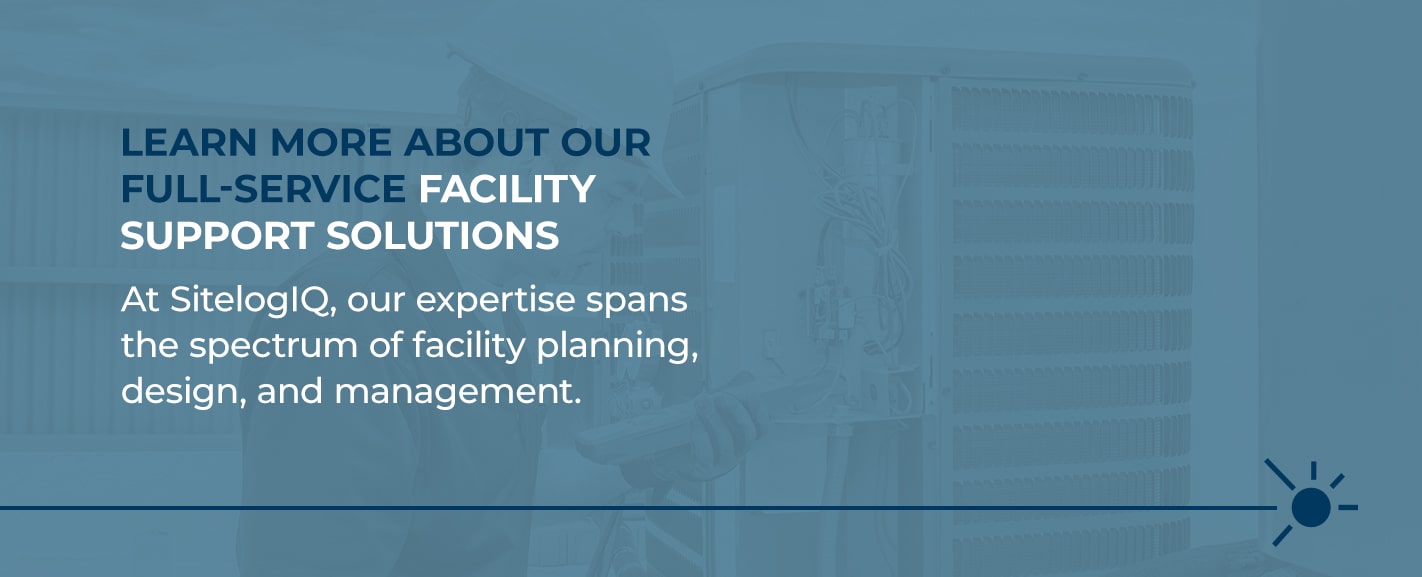
Imagine trying to concentrate on learning when you’re overheating in a classroom that’s too warm or shivering in one that’s too cold. Either temperature can make students and teachers uncomfortable and make it more difficult to focus on schoolwork. For many schools, the more common scenario is a classroom lacking adequate air conditioning (AC), making the beginning and end of the school year uncomfortably hot in many cases.
No one wants to feel uncomfortable in their classroom, but does discomfort lead to an impact on what students can achieve? As we’ll see, a classroom’s temperature can have a notable effect on students’ academic performance.
The Importance of Air Conditioning in Schools
The connection between temperature and the ability to learn was not always documented. Still, teachers and students understood that a sweltering classroom was a good enough reason to break for the summer. Before air conditioning became a modern amenity, most wealthy and middle-class urbanites would leave the city during the hot summer months, which led to the widespread adoption of summer vacation in the U.S. Throughout most of the 20th century, schools across the nation typically let out in early June and resumed after Labor Day.

Today, many schools have reduced that break by ending the school year a bit later in June and resuming in August to curb summer learning loss. But the general practice of a summer break continues. For many schools, the lack of air conditioning has also been a factor.
Today, AC has become a modern convenience most of us enjoy in our homes, cars, and workplaces. But what about our schools? While some schools are equipped with AC systems, a 2020 government report found that approximately 36,000 U.S. schools have inadequate heating, ventilation, and air conditioning (HVAC) systems. That number represents schools from 41 percent of all public districts. Some schools don’t have any form of AC at all and must dismiss students when temperatures get too high.
The report points out that inadequate HVAC systems can lead to health and safety issues, but as we’ll see, the negative effects don’t just stop there. There is also an important connection between temperature and the ability to learn.
Does Classroom Temperature Affect Student Learning and Achievement?
The connection between cold or hot classrooms and learning is well documented through many research studies.
A 2014 study demonstrated that both excessively cold and hot temperatures directly affect students’ learning ability. High school students scored an average of 76 percent when it was 61°F, and did worse when it was 81°F, scoring an average of 72 percent. When it was 72°F, what most people would consider a comfortable temperature, students’ average scores went up to 90 percent.
The researchers noted that when the body is subjected to thermal discomfort, a person’s brain will be distracted by signals from the body. When you’re in an environment that’s hot or cold, maintaining homeostasis becomes your mind and body’s priority, making it harder to concentrate on schoolwork.
A 2015 study of 140 fifth-grade classrooms found that both ventilation and temperature affected students’ test scores. Within the observed range of 20-25°C, which equates to 68-77°F, students’ scores increased by about 12-13 points with each degree decrease in temperature. The study concluded that proper ventilation and temperature control in classrooms could significantly improve students’ academic achievement.
In 2017, a Harvard graduate student analyzed data from 1999 to 2014. The goal was to find a connection between New York City high school student’s performance on a test they must pass to graduate and the temperature outside on test day. The test was typically administered in June when temperatures could be quite warm. The results showed that students were 12 percent more likely to fail their test if it was 90°F outside than if it was 72°F.
Some students may have been unaffected by outdoor temperatures thanks to air conditioning in their classrooms. But as of 2012, 38 percent of NYC public school buildings were without AC, and 42 percent of the buildings equipped with AC had defective components.
If all that evidence isn’t enough, a 2018 study looked at 10 million students who took the Preliminary SAT (PSAT) test. It concluded that, without air conditioning, hotter school years resulted in less learning. For every one-degree increase in temperature over the school year leading up to the test, students demonstrated a 1 percent decrease in how much they learned that year. The research also showed that the presence of air conditioning offset this problem significantly.
The body of research leaves no doubt that temperature does indeed affect students’ ability to learn and their academic performance. In addition to the direct connection of inhibiting students’ focus, HVAC problems can also create an unhealthy environment that leads to more illnesses. For students, this means more sick days home from school, and research shows that missing school hurts a student’s academic performance. Both directly and indirectly, hot and cold classrooms can cause major problems for students.

What Is the Optimal Classroom Temperature?
While it’s clear temperature and school work performance are related, you may be wondering what the best temperature for studying is. There are no official classroom temperature regulations to refer to, but there are some guidelines schools can follow to make their classrooms comfortable spaces for staff, teachers, and students.
An analysis of the data suggests the ideal temperatures to help students learn in reading and math classes is anywhere between 68 and 74°F. Your school may be able to adjust the temperature to be a bit higher in the winter and lower in the summer as your geography and climate dictate. But you should stick as closely to this range as possible to keep the learning environment comfortable.
Comfort also includes other factors like proper ventilation, humidity, and indoor air quality. K-12 districts should take all of these factors into account for optimal comfort.
Learn More About Our Full-Service Facility Support Solutions
If your school’s HVAC system is lacking, you’re certainly not alone. Many school districts across the U.S. have been making do with inadequate HVAC systems. In the worst cases, this means relying on open windows and fans to make classrooms less uncomfortable during hotter months or additional layers of clothing in the winter. These scenarios aren’t just unpleasant — they can interfere with students’ ability to focus and learn and lead to lower academic achievement rates.

At SitelogIQ, our expertise spans the spectrum of facility planning, design, and management. Our team has a wealth of knowledge and experience helping organizations, including schools, address infrastructure problems and optimize their facilities in the most cost-effective way possible. The result is a healthy, comfortable indoor environment where administrators, teachers, and students can thrive. Learn how we’ve assisted other schools, and contact us to see how we can provide your school with comprehensive facility support solutions.


